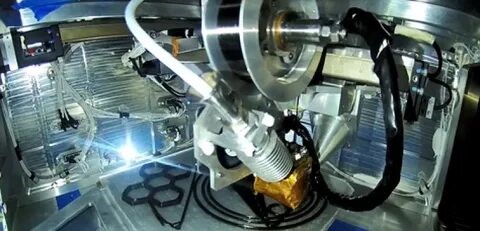Manufacturing processes in a variety of sectors have been transformed in recent years by 3D printing in China and globally. However, despite its increasing popularity, there are still a lot of myths regarding the capabilities and limitations of 3D printing. As technology becomes more widely available, it's critical to separate facts from fiction. Further in this blog, we will dispel five widespread misconceptions about 3D printing that may be preventing prospective users from learning more about this cutting-edge technology.

3D Printing is Only for Prototyping
Although rapid prototyping was the primary reason 3D printing became popular, its uses have since expanded greatly. Manufacturers now employ 3D printing for specialised tools, end-use parts, and mass production in certain scenarios. Unique benefits of the technology include the ability to efficiently create complicated geometries that are not possible with conventional production techniques.
3D Printing is Too Expensive for Small Businesses
The cost of entry-level 3D printers has dropped dramatically, with several high-quality options available for $300. The cost of even industrial-grade machinery has decreased. The reduction of material waste, the removal of tooling expenses, and the facilitation of on-demand manufacturing provide the true cost benefit. Some applications make 3D printing more affordable for a traditional mold manufacturer.
3D-Printed Parts Are Always Weak and Fragile
Metal powders, engineering-grade resins, and carbon-fiber-reinforced filaments are nowadays high-performance choices for 3D printing. When the right design and printing settings are used, 3D-printed components may reach remarkable strength-to-weight ratios. They are currently used in demanding applications across a wide range of industries, including the automotive and aerospace sectors.
3D Printing is Too Slow for Production
Although early 3D printers were slow, printing speeds have increased substantially due to technological developments. Parts may now be produced in minutes instead of hours with the new technologies like multi-jet fusion and high-speed resin printing. In fact, 3D printing can surpass conventional production techniques that need intricate equipment setup for specific geometries.
Anyone Can 3D Print Anything
Even though 3D printing is widely available, it takes a great deal of skill to realise its full potential. Understanding design concepts, material qualities, and machine capabilities is essential for successful printing. So both engineering and the particular 3D printing technique must be mastered in order to produce optimised designs that make effective use of the technology's advantages.
Final Words
Technology is overcoming old limitations and creating new possibilities, as 3D Printing in China keeps developing at unbelievable rates. Businesses may make well-informed judgements about implementing 3D printing if they are aware of these facts. By dispelling these widespread misconceptions, you may more accurately assess 3D printing's potential value for your particular requirements, whether you're thinking about using it for production, prototyping, or somewhere in between.
FAQs
Which materials are suitable for 3D printing?
Materials include metals, ceramics, concrete, food, and even live cells, in addition to conventional polymers like PLA and ABS that can be used for 3D printing.
Can conventional manufacturing be replaced by 3D printing?**
Because of its superiority in customisation, intricate designs, and small-batch production, it complements rather than replaces conventional techniques.
To what extent are 3D printers accurate?
While industrial systems can attain ±0.025mm for extremely accurate applications, consumer printers only reach ±0.1mm.
Is 3D printing good for the environment?
Although it facilitates local production and generates less waste than subtractive manufacturing, plastic filaments create sustainability issues.
What industries benefit most from 3D printing in China?
Industries such as automotive, aerospace, healthcare, and consumer goods are increasingly adopting 3D printing in China for rapid prototyping and customized manufacturing.
How does 3D printing in China compare to traditional manufacturing methods?
3D printing offers greater design flexibility, reduced waste, and faster turnaround times compared to traditional manufacturing, making it ideal for complex and low-volume production.
Ready to leverage the advantages of 3D printing in China? Contact UIDEA today to discover how our cutting-edge 3D printing services can transform your manufacturing process.
















